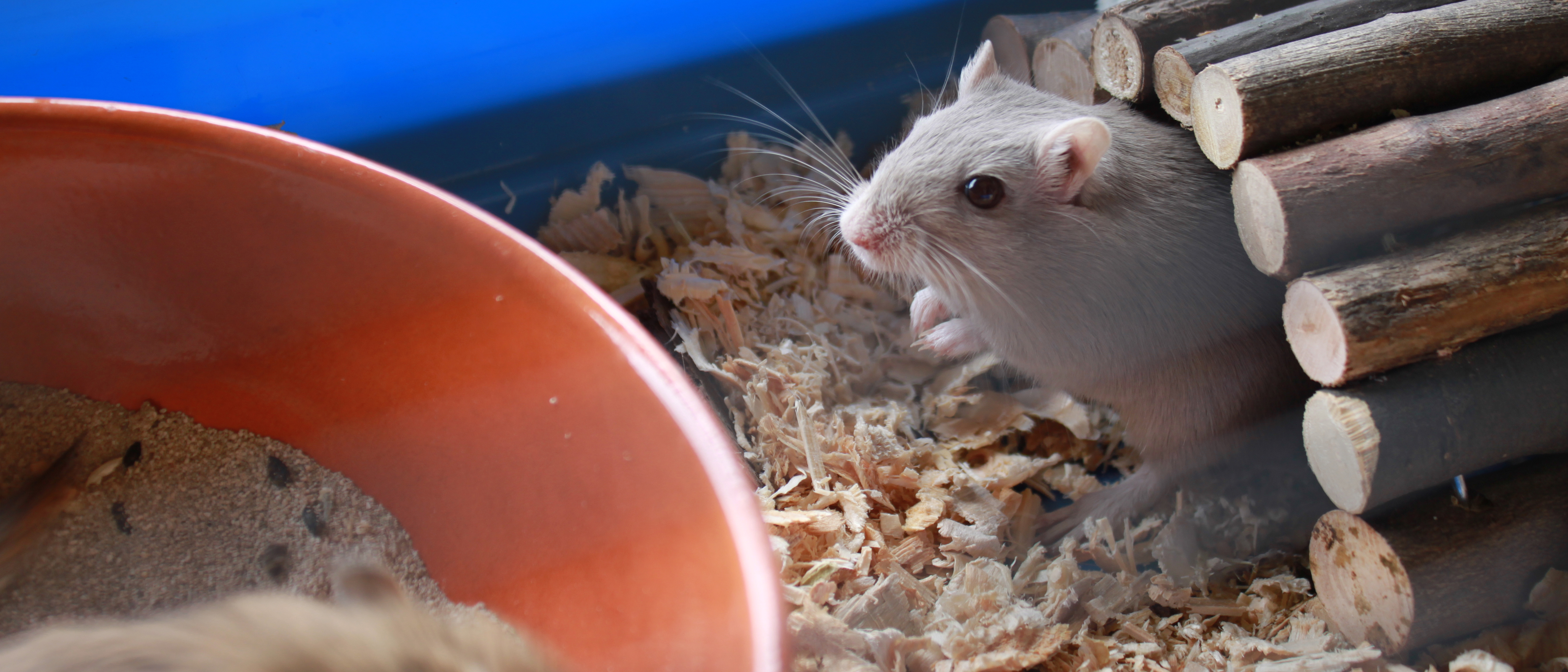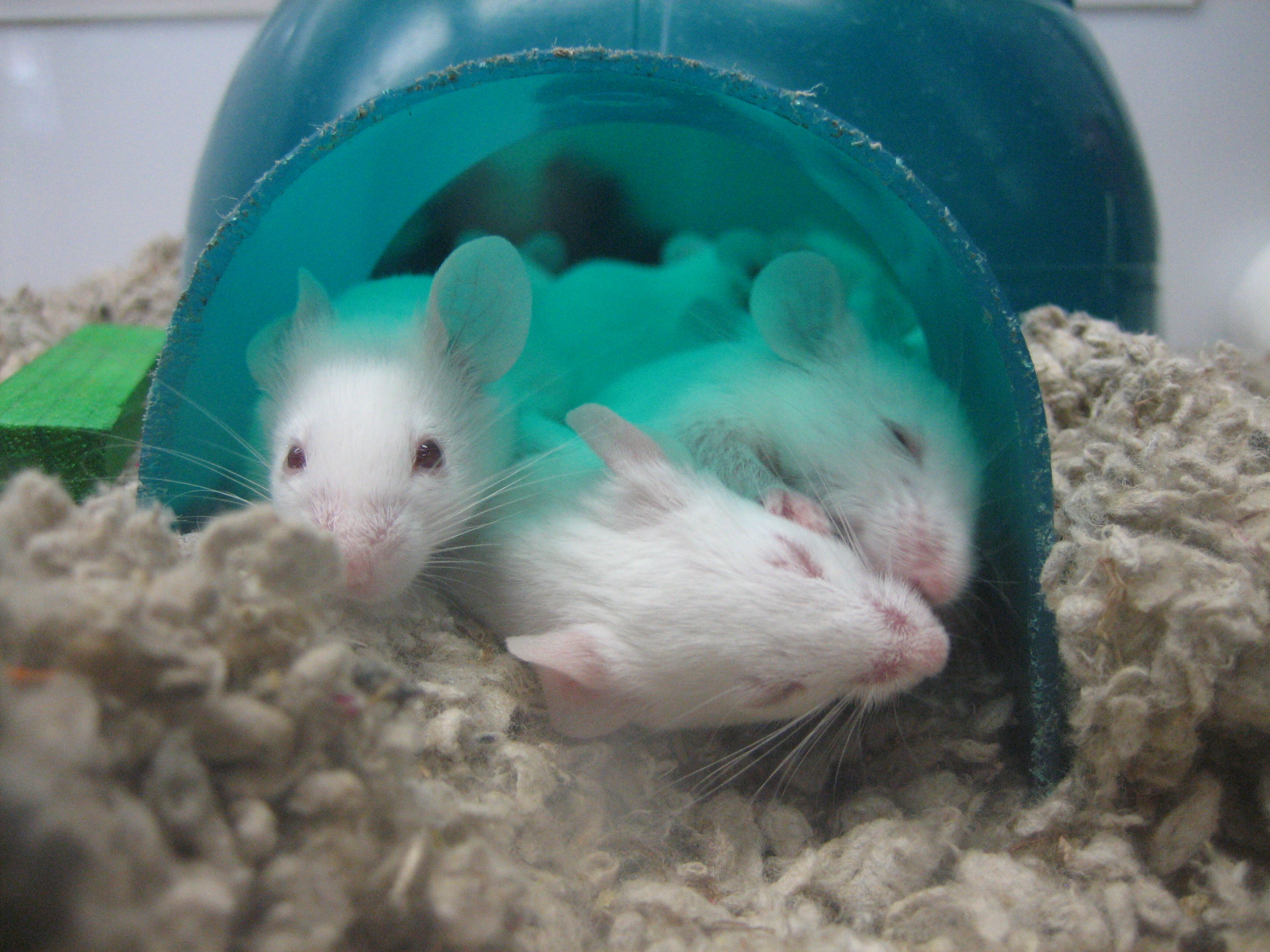A rare disease offers clues to how genes affect social behavior
Williams syndrome is helping scientists understand the roots of sociality
One of the things that makes us human is how we socialize with one another. What drives our social behavior is a complex mix of genes, epigenetics, and external factors such as how or where a person is raised.
Williams syndrome is a genetic disorder that results in a particularly striking departure from what is considered normal behavior: people with it are hypersocial, extremely empathetic, and indiscernibly friendly towards strangers, especially as children – sometimes to the detriment of their own safety. Scientists have been able to pinpoint that the disorder, which affects 1 in 20,000 to 1 in 7,500 people, results from a deletion of 26 to 28 genes. In recent years, they've begun using Williams syndrome to study the influence of this select group of genes on our social behaviors.
Genetic manipulations in mice are frequently used as a tool in neuroscience to uncover the function of genes and their alterations. But single-gene ‘knock-out’ mice, in which a specific gene is lost, haven't really been able to show the role individual genes play in Williams syndrome. This is largely because the mutations in these genes don’t actually mirror the gene networks responsible for the characteristics that present in people with the disorder. Imagine the Royal Philharmonic Orchestra performing Tchaikovsky’s "Symphony No. 4" with just the string players missing – it might sound a bit off, but you’d probably still be able to make out the tune. If the woodwinds and the piano – two classes of instruments that also play a central role in the symphony – were missing too, the tune would be completely lost.
Unlike the diseases I study, for which a single gene is responsible, working out how a collection of 26 to 28 genes interact with external factors to shape social behavior is a lot more challenging.
In 2009, years after the first 25 Williams syndrome-causing genes were identified, a group of scientists decided to functionally pick apart the gene deletions that cause Williams syndrome by creating three different types of mouse models – two missing one copy of a different portion of the 25 implicated genes and a third mouse model lacking all 25 genes like in the human disease.

One mouse in his time plays many parts
next_aqva / Flickr
All three mice were able to replicate crucial aspects of the human Williams disorder, including increased sociability, to varying degrees.
To explore the involvement of the two groups of genes in social disinhibition, a variety of social interaction tests were carried out in these mice. For example, in the partition test where a clear plastic wall is placed between cages that contain holes and the behavior and level of interest towards either a novel or familiar mouse on the other side is scored, all three deletion mice spent significantly more time close to the new mouse compared to normal mice.
This suggested that multiple genes within the whole deletion region give rise to this behavior. However, for the tube test, where two mice meet in a narrow tube and the dominant one makes the other reverse, the full-deletion mice and only the mice that were missing the first portion of the 25 genes frequently lost to the normal mouse.
Although mouse studies are clearly very helpful, providing a powerful way to study the effects of individual and combinatorial gene disruption, mice are genetically different from us and therefore do not perfectly represent our genetic landscape. To make things more complicated, this landscape is highly diverse between individuals.
Stem cells derived from real patients with complex neurodevelopmental disorders such as schizophrenia can be turned into 2D and 3D cell structures and studied in a dish. Unlike mouse models, patient-derived stem cell models allow us to investigate the true, rather than similar, cellular effects of our genes.
In the last few years, this strategy has been used by a number of research groups working on Williams syndrome to create brain cells that essentially have the human disorder, with their findings being published in Nature.

And our little lives our rounded with a sleep.
Rene Schwietzke / Flickr
The gene GTF2I has been studied in numerous patient-derived cellular models, revealing multiple functions. GTF2I is a transcription factor – a protein that controls how genetic information is expressed from DNA – and has been shown to play a key regulatory role by directly controlling other genes in the deletion region. Different cell lineages have been created, including the precursors of the telencephalon (telencephalic neural progenitor cells), the seat of all higher brain functions, and neural crest stem cells from which our facial structures derive. By studying these different brain cell types, scientists discovered that GTF2I is particularly bad at carrying out its job of controlling other genes in cells like the ones just described. As might be expected, these pathways are relevant to some of the characteristics associated with Williams syndrome.
These factors influence not just the social aspects of the disorder, but the physical characteristics associated with it as well. People with Williams syndrome have a striking set of facial features, traditionally described as "elfin," with an upturned nose, high cheekbones, big smiles, and pointy chins. Taken together, it is not so surprising that some folklorists speculate that real people with Williams syndrome may have inspired many fictional works throughout history, such as William Shakespeare's Puck in A Midsummer Night’s Dream.
So what has studying Williams syndrome taught us about normal social behavior? Disease-causing genes that have been linked to particular traits of those with the disorder can offer clues for us to better understand variations in behavior within the general population. Differences in our DNA don't always cause disease. In fact, they are quite normal. These DNA "polymorphisms" can be single changes, deletions, or insertions or changes in the number of nucleotides, the building blocks that make up our DNA. Such polymorphisms can give rise to differences in certain human behaviors, and this is where Williams syndrome comes in.
'Social' genes
Through studying its multigenetic basis, Williams syndrome has helped us to identify which genes have an impact on our social behavior. For example, common polymorphisms in the gene GTF2I, found in the Williams syndrome deletion area, are associated with reduced anxiety in the general population and warmth, a facet of extraversion, in women. Offering a functional basis for variations in this gene, these polymorphisms have been specifically linked to reduced amygdala reactivity, a brain region involved in fear responses.

What fools these humans be
Allan Foster / Flickr
Williams syndrome hasn’t only helped us to understand our own social behavior, but also that of other species. Have you ever wondered why a dog is more likely to lick your face and wolf more likely to bite it off? Giving new meaning to the phrase "man's best friend," a study into the genetic basis of the various characteristics associated with domestication of dogs has found that our friendly canine pals have a genetic deletion in the equivalent genomic region linked to Williams syndrome in humans. They found that hypersociability, a key characteristic of the disorder, is a fundamental element of domestication that distinguishes dogs from wolves. Remarkably, they have also been able to identify structural variants in GTF2I and GTF2IRD1 that they propose contribute to extreme sociability in dogs, highlighting the conservation of these genes and their associated behavior between man and his best friend.
There are many rare diseases that go unnoticed. While often devastating for the people who live with them, they can seem irrelevant to everyone else because what leads to them is so hard to relate to. Hopefully though, what Williams syndrome can reveal about the way we interact with each other will encourages us to look a little closer at other rare and mysterious diseases and ask what they might teach us.
Peer Commentary
Feedback and follow-up from other members of our community
Devang Mehta
Genomics
University of Alberta
A couple of questions: How confident are researchers that the syndrome is caused by those 26-28 genes in humans? And how did they arrive at this conclusion – like, what populations did they study? Is it derived from a limited patient sample?
Secondly, to me, Williams syndrome doesn’t sound much like a “genetic disorder” but rather just a behavioral phenotype. Where and how do human geneticists and psychologists draw lines between differences in behavior and “disorders”? And how did they decide to put Williams syndrome in the latter category?
I imagine these distinctions will only get more important as we start using pre-implantation genetic diagnosis (as Dan Samorodnitsky has written about here before) and gene-editing for more serious human genetic disorders like Huntington’s.
Good question about what makes something a disorder versus just a phenotype. I’m not sure where the line is drawn, but I just did a bit of Google scholaring on Williams syndrome, and it’s not as benevolent as it seems. There are multiple physical symptoms as well, including developmental disabilities, gastrointestinal issues, and cardiovascular disease. I’m really curious if there is an association between Williams’ syndrome and kidnapping, but I haven’t found anything on that yet.
Thanks for the great questions. In answer to your first question, Devang, most individuals diagnosed with WS have the ‘classic deletion’ pertaining to the 26-28 gene located on chromosome 7 (7q11.23), which is easy to detect using Fluorescent In Situ Hybridization (FISH), a technique that probes specific DNA sequences so that they can be visualized.
However, whether 26 or 28 genes are deleted does make a difference to which particular characteristics occur, and there are also rare atypical deletion cases, where much smaller deletions are observed.
In answer to your second question, Allison is spot on! I wanted to focus on the social aspects of Williams syndrome for the piece but sadly, there are lots of not so fun consequences to the deletion, which categorize Williams syndrome as a ‘disorder’ - indeed, most people with Williams syndrome have serious heart problems and they have a life expectancy of about 50.
Allison, you got my curiosity going too! I couldn’t find anything on an association between Williams syndrome and kidnapping, perhaps because Williams syndrome is quite rare and kidnappings are also somewhat uncommon. Maybe also because this is a Williams syndrome parent's worse nightmare, and so they do everything they can to prevent it from happening: in one interview I watched, the parents plastered their entire house with signs warning against opening to door to strangers.